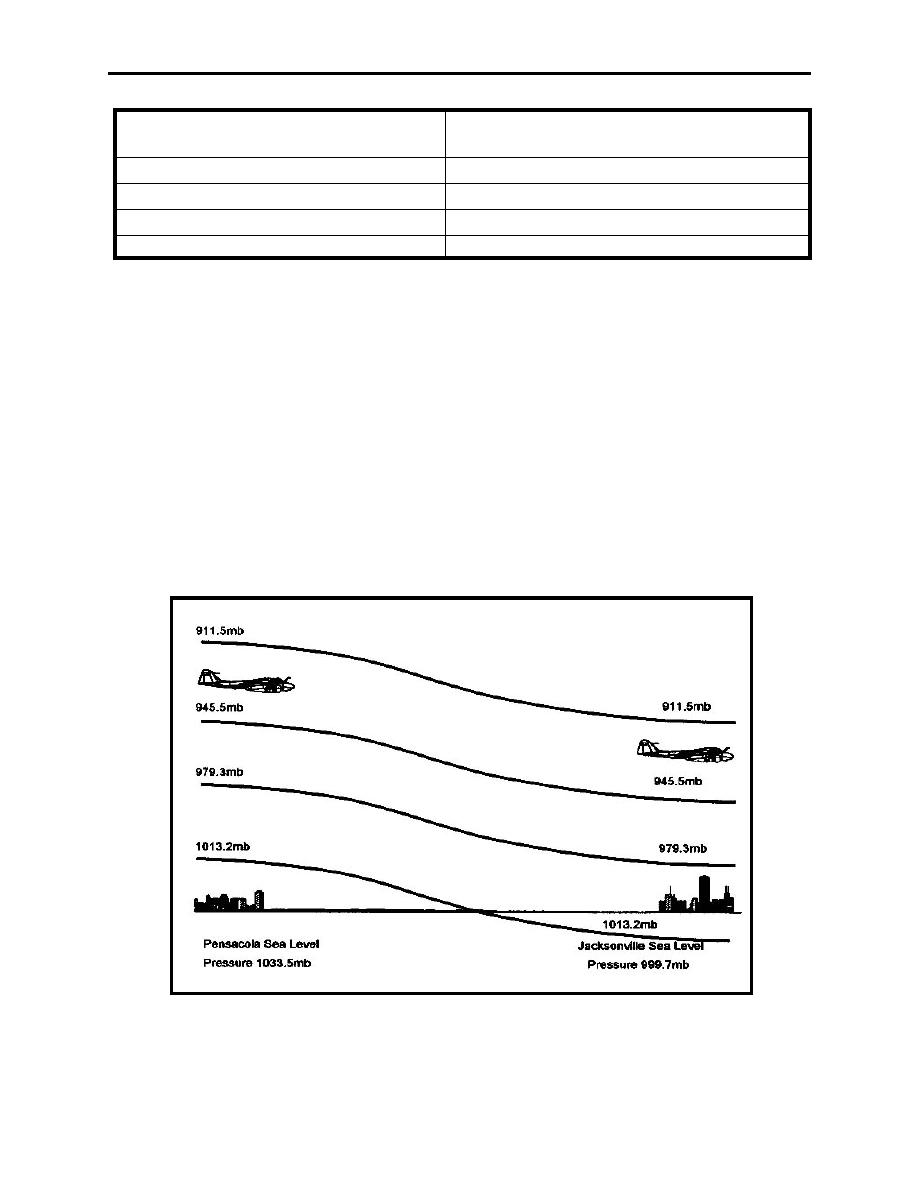 |
|||
|
|
|||
|
Page Title:
Figure 1-9 Density Altitude Effects on Aircraft Performance |
|
||
| ||||||||||
|
|  CHAPTER ONE
AVIATION WEATHER
HIGH TEMPERATURE OR
LOW TEMPERATURE OR MOISTURE
MOISTURE
Lower Air Density
Higher Air Density
Higher Density Altitude
Lower Density Altitude
Decreased Thrust and Lift
Increased Thrust and Lift
Longer Takeoffs and Landings
Shorter Takeoffs and Landings
Figure 1-9 Density Altitude Effects on Aircraft Performance
113.
ALTIMETER ERRORS
Pressure
When an aircraft flies from one place to another at a constant indicated altitude (by referencing
the barometric altimeter), it is flying along a surface of constant pressure. Figure 1-10 shows the
path of an aircraft as it follows such a constant pressure surface, done by flying a constant
indicated altitude. As the sea level pressure on the surface decreases (all other conditions
remaining the same), the whole column of air aloft is lowered, causing an aircraft flying at an
assigned MSL altitude to descend to a lower AGL altitude. Only by updating the reference of the
altimeter setting can this potential problem be eliminated, and a more constant AGL altitude can
be maintained.
Figure 1-10 Path of Aircraft Flying a Constant Indicated Altitude with Decreasing Surface
Pressure
1-12
General Structure of the Atmosphere, and Atmospheric Temperature and Pressure
|
|
Privacy Statement - Press Release - Copyright Information. - Contact Us |